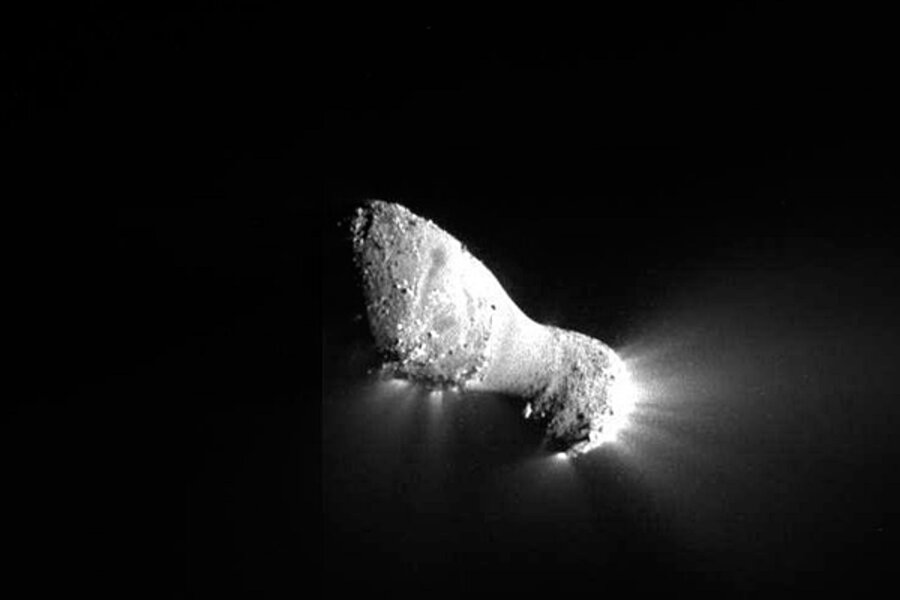Comet Hartley 2: NASA rendezvous a success, even better pics on the way
Loading...
NASA's EPOXI mission to a tumbling, puny peanut of a comet returned stunning images of the object Thursday following a five-year, 2.5-billion-mile trip.
Mission control erupted into applause when they received the first "I'm still alive" information from the spacecraft after its closest approach to comet 103P/Hartley 2 at 10:01 Eastern Daylight Time this morning.
An hour later, when an initial set of five medium-resolution images taken at closest approach appeared, applause, high-fives, and hugs became the order of the day.
Each of the five images elicited choruses of "oh, my!" "amazing!" and "unbelievable!" as they revealed an odd-shaped, pockmarked object with jets of dust and gas erupting from the surface.
Mission controllers delivered the craft to its rendezvous with a pinpoint precision that a Tom Brady or Peyton Manning could only dream about. EPOXI passed within 434 miles of an object only about three-quarters of a mile across after traveling nearly 3 billion miles.
Ed Weiler, who runs the space science mission directorate at NASA headquarters in Washington dubbed the feat "just amazing."
The first images back are not EPOXI's best. Those will be downloaded from the spacecraft over the next day or so and will require extensive processing. But the medium-resolution images the science team has seen are enough to have whetted its collective appetite for the more-detailed images to come.
Comets are widely thought to be the frozen leftovers from the formation of planets in the solar system some 4.5 billion years ago. Until today, scientists had clear images of the nuclei from four of them. And they all look different.
Images of Hartley 2, discovered in March 1986, will add yet another set of close-ups to this cometary rogues gallery. In doing so, the close encounter provides a unique opportunity for comparisons, because EPOXI now has taken images and spectra of two starkly different comets with the same suite of instruments.
In 2005, the EPOXI craft, then known as Deep Impact, encountered comet 9P/Tempel 1 and sent an impactor into its surface to allow researchers to analyze the material the projectile kicked up.
Even before today's encounter, the two objects formed a kind of cometary Laurel and Hardy: Tempel 1's nucleus appeared as a relatively inactive, rotund chunk of rubble and ice about four miles across; Hartley 2 was though to have a smaller, more svelte nucleus that is ejecting dust and gas at a remarkably high rate for such a small comet.
The first-cut images bear that out.
At least two possibilities exist to explain such differences, suggests Michael A'Hearn, a University of Maryland planetary scientist and the mission's lead scientist. The comets might have formed in different places in the early solar system, perhaps giving them different mixes of material. Or they began with the same ingredients, but somehow evolved differently during their repeated sojourns around the sun.





